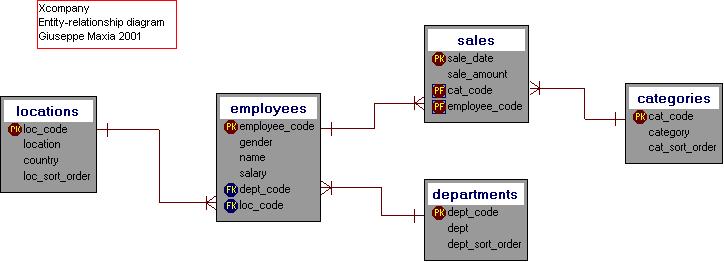MySQL Wizardry
|
By Giuseppe Maxia |
|
A call for help - Defining the problem
I called in the Wizard on a Friday evening. It was almost six p.m. and I was afraid he had already left for the day. Instead, he answered at the first ring.
Wizards never go home early.
He recognized me and asked how he could help. I told him. He listed patiently, without asking silly questions in between, and finally said "I think I could provide you with some useful tool. See you in half an hour" and hung up.
Twenty five minutes later he was in my office, sitting in front of me and mentioning coffee. Then he started to ask questions.
"So, what exactly do you need to do?"
"I need to get a cross-tab out of my database."
"How did you solve the problem so far?"
"In the beginning, I used to export my data to a spreadsheet, and let the users do the work. You know, nowadays these spreadsheets can do almost anything, provided that you are smart enough. Therefore, I gave my users the possibility of exporting records to their favorite application so that they could twist the data as they liked."
"And why you can't do it anymore?"
"We're growing, you know. When I started the database, we had just a few hundred records, and everything worked just fine. But then, we hit the market really hard, and before I could realize it, we had more than ninety thousand records that were about to go down to the spreadsheets and the users complained that it was slow and asked me to integrate the x-tab into the main application. They say that, after all, these nice desktop databases that I don't want to mention -- the Wizard nodded approvingly -- have such features, and my application should have it as well."
"Then you did what they asked for. You created a function to integrate the cross-tabulation into your application." He was reading me like an open book.
"Yes, of course I did it, even though it was not easy. To minimize the amount of data transferred from the server to the client I was only dealing with summarized data, you know, GROUP BY two fields. An then I found a way of translating the values of the second field into columns and summing up the data."
The wizard looked at his coffee mug for a long time and said "You seem to have solved your problem then. Haven't you?"
"Well, not exactly. Dealing with a large matrix of data is not what C language seems to be made for. I mean, it is, but I can't cope with it as well as I can work out a few spreadsheet macros. And the algorithm has to take care of peculiar cases where the server does not return a value for the second field, and then the management wanted to have the cross-tab broken down by additional rows and columns, and they want such reports to be available into the main application by Monday, and I don't think my algorithm could cope with such request. This is why I asked your help."
I looked at him expectantly. I knew that now he could do one of two things: he could either say that the problem was trivial and uninteresting and he would leave me in the glue, or he should ask to see the algorithm and tell me what was wrong with it and give me a simple and efficient solution, which will make my application scalable to solve the darn problem. He had done that before for me. He had looked at my application, found the reason for inefficiency, suggested a simpler approach, and left me happy, wiser and puzzled.
That day, though, he did none of that. He didn't want to see the code at all. Instead, he asked for a refill of coffee and told me "Give me a tour of your company."
I understood what he wanted. He wasn't looking for a walk among the desks, but he wanted to see the data. I explained that I could not show him the real data, since my boss was really concerned about the competition learning what we are up to, but happily I had some dummy data that I was using with our real structure when I was testing the database, and I showed him that.

"This is the design of the main tables in the DB." I explained. "We have an employees table, code-related with departments and locations, which is also related to countries. The sales table has references to the employees and categories tables. Only employees belonging to the Sales department can be involved in sales, but they can sell anything, from software to services to education."
The Wizard studied the diagram for a few minutes, nodding from time to time, as if recognizing an old friend. Then he looked at me and said "OK. Let's do some cross tabulation. Do you have anything especially urgent?"
"As a matter of fact, I have more than one specific urgent job, but if you don't mind, I would like to see the solution of a simple one, so that I can work it out on a more complex one."
"It's fine with me." He said. "Show me your case."
"OK. I will query two tables, employees and locations, and get the list of employees with the town where they work."
I opened a Xterm in my Linux box and connected to MySQL. There I entered:
mysql> SELECT name, gender, location
-> FROM locations INNER JOIN employees USING (loc_code);
|
"What I would like to have," I explained, "Is a row for each town, with a column for each gender and a total column."
 |
DevShed.com is the independent Open Source Web Development Site. Fresh tutorials, articles and discussion of MySQL, PHP, Perl, Python, Apache, JSP and administration can be found daily at http://www.DevShed.com/ This article is Copyright 2001 by Developer Shed, Inc. All rights reserved. Reproduced with permission. |

